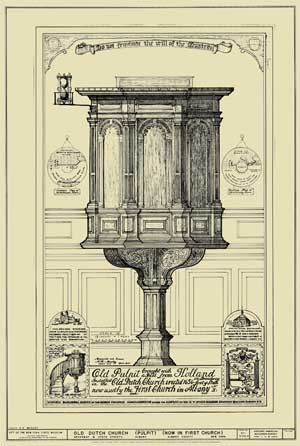Coureur de bois.
Living Among the Dutch.
At what point Moïse headed south is unclear. He was 17 when events unfolded in Schenectady in 1690, most young men were in their early twenties when they set out. The Governor painted an unflattering portrait of the adventurers in a letter:
"Our young men are disposed to live like savages, frequent their company and be forever unruly and lawless like them. I cannot tell you monsieur how attractive this Indian life is to our youth. It consists of doing nothing, caring for nothing, following every inclination and getting out of the way of all correction." ~ Governor Joseph-Antoine le Fèbvre de La Barre (1683)
Trading in Albany would be contrary to French interests, but then again his brother René had not fared well in his dealings in the west. Without a congé there is no documentation of his transactions in the fur trade, though records of some of his other activities do exist. In any event, it is obvious he managed to stay busy.
A Union.

Extractions of the baptism rolls of the Reformed Dutch Church of Albany include Jean-Baptiste Depuis baptized 27 December 1696, his father being Moyse Depuis and mother Anna. The child's sponsor was Abigael Verplank, the daughter of a shoemaker in Albany.
Transcribers of the entry note the child was illegitimate. It further clarifies that the boy was born to a semiblack mother (or Negro mother per The Annals of Albany, Volume 3) and a Christian father. No other mention of a child by this name is found with the couple.
Seven months after the birth of his son the 24 year old Moïse took a wife.
Annatje's Origins.
Later documents suggest Annatje Christiaanz was born around 1675 but her birth record does not exist or at least has not been uncovered. Annatje translates from Dutch as Anna and the names are used interchangeably.
Unlike most French Canadian entries, parents are not mentioned in the Dutch marriage roll which has led to speculation as to her origins, that is, were Anna who bore Moise's child in December 1697 and Annetje whom he married seven months later the same person or were they two different women?
- Is she the semiblack woman who bore Moïse's son in December and took the last name Christiaanz in the marriage record because she was a Christian?
- Is she the daughter of Christian Christiaanz, a Dutch settler? If so, was she born to his wife (it is estimated he married Elizabeth Eldersz Ysbrants about 1678 which is about 3 years after Anna's estimated year of birth ), or was her mother a slave?
Slavery in Nieuw Nederland.
Slaves were initially introduced in 1625 by the Dutch West India Company for farming and trapping. The Dutch preferred African slaves from the southern Caribbean island of Curaçao. The purchase price in 1664 was around 600 guilders. Under Dutch rule a child born to a free woman was free, and a child born of an enslaved woman was a slave. Slave families were not generally split up and their children were baptized in the Dutch Reformed Church.
The men were sometimes armed and called upon to serve in the militia. Some served as half slaves, that is, part of the year they were on their own and part of the year they were required to report to their master to work in the fields. They could earn wages for work they did on the side. Freed slaves had standing in the court, could own land and intermarried freely with Dutch and later, English settlers. For a time after the surrender of New Netherland, the English continued these practices.
- Jetté, René, Dictionnaire généalogique des familles du Quebec des origines à 1730, Montreal: Les Presses de l'Universite de Montreal, 1983
- https://www.judhartmanngallery.com/work/archer.html
- Records of the Reformed Dutch Church of Albany, New York, 1683-1809; Excerpted from Year Books of the Holland Society of New York; Baptismal Record of Albany, Begun in the year 1683. (page 73) 1696 - Dec. 27. Baptism: "semiblack mother" and The Annals of Albany, Volume 3, publisher Joel Munsell, 1852: Anne, A Negro mother
- Records of the Reformed Dutch Church of Albany, New York, 1683-1809; Excerpted from Year Books of the Holland Society of New York ; Marriage record of Albany, commenced in the year 1683. (page 29) 1697 - July 21.
- Records of the Reformed Dutch Church of Albany, New York, 1683–1809, Dave Pane-Joyce, Worcester, MA
- Barth, Barbara A., The Family of Ysbrant Eldersz of Rensselaerswyck, (The New York Genealogical and Biographical Record, Vol. 128, Number 3 (Jul 1997) & Number 4 (Oct 1997).), p.229
- SLAVERY in NEW YORK [8/4/16]
